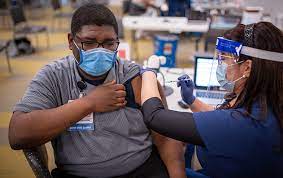As the COVID-19 pandemic continues to impact our communities, the imminent arrival of flu season adds another challenge to maintaining a healthy environment in schools. Both the coronavirus and the flu share similar symptoms and transmission methods, which can create confusion when trying to prevent and identify potential outbreaks. Schools must adopt comprehensive strategies to minimize infection and protect their staff, students, and wider community.
Here are some guidelines for keeping schools healthy during the convergence of COVID-19 and flu season:
1. Encourage vaccinations: Vaccination campaigns should be a top priority for schools to help prevent both COVID-19 and influenza. Collaboration between healthcare providers, local health departments, and community organizations can make these vaccination campaigns more accessible and widespread.
2. Implement basic hygiene practices: Encouraging regular hand washing, setting up hand sanitizer stations, and educating students on the importance of good respiratory etiquette can go a long way in preventing infections. Providing tissues and no-touch trash receptacles can further reduce the spread of germs.
3. Promote mask-wearing: Face masks have shown to be an effective tool in slowing the spread of COVID-19 and may provide some protection from seasonal flu as well. Schools should emphasize the importance of wearing masks indoors or in crowded spaces, especially when physical distancing cannot be maintained.
4. Enforce physical distancing: Limiting close contact between individuals is critical in reducing the transmission risk of both COVID-19 and influenza. Administrators should consider implementing alternative classroom layouts, staggering schedules, or moving activities outdoors when possible.
5. Improve ventilation: Proper airflow can reduce airborne transmission to some extent, so schools should optimize ventilation systems by opening windows, using air purifiers or filters, or installing proper exhaust fans as needed.
6. Enhance cleaning protocols: Routine cleaning with approved disinfectants is essential for maintaining a healthy school environment. High-touch surfaces like doorknobs, light switches, and desks should be cleaned daily, and shared equipment should be wiped down between uses.
7. Develop clear policies on staying home when sick: Staff and students should be encouraged to stay home if they are experiencing any symptoms of COVID-19 or influenza. Schools must have flexible absentee policies that do not penalize individuals for prioritizing their health and the well-being of others.
8. Establish school-specific response plans: Every school should develop a detailed plan that outlines the steps to be taken when an illness is reported among staff or students. Effective communication is key to keeping all stakeholders informed and maintaining a safe environment.
The convergence of COVID-19 and flu season presents a complex challenge for school administrators, educators, parents, and students. However, by adopting these strategies and prioritizing public health measures, schools can help safeguard their communities and prevent widespread infections during this critical period.





